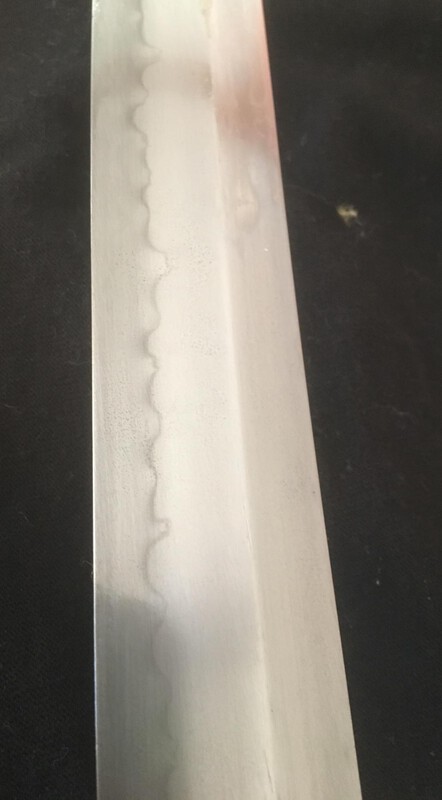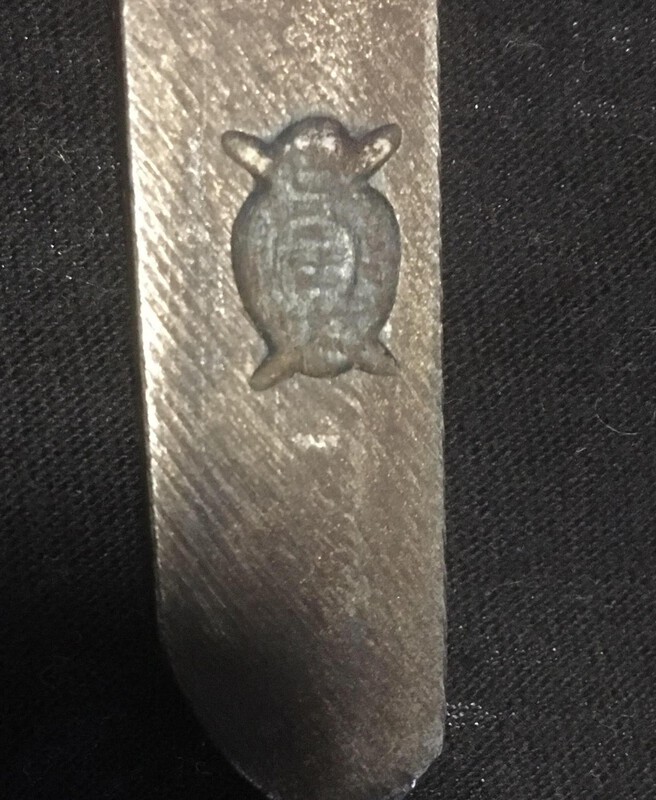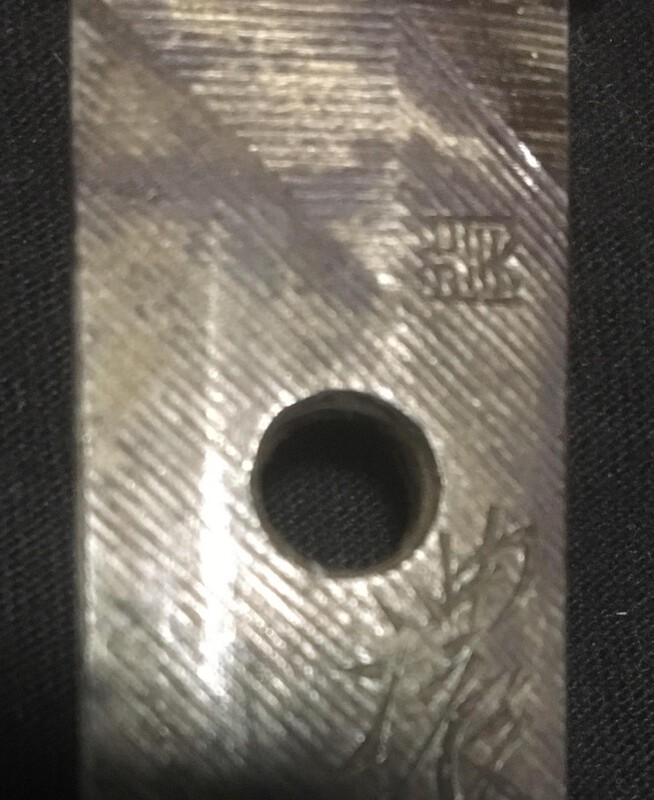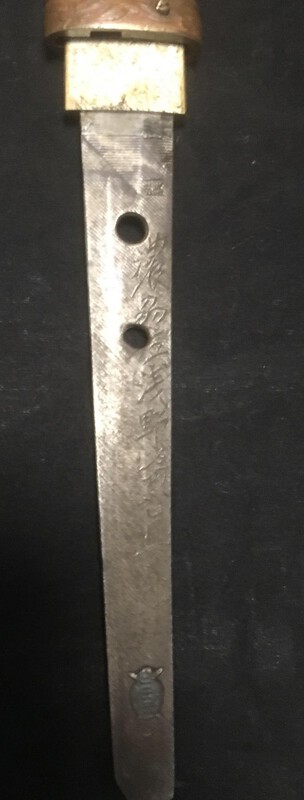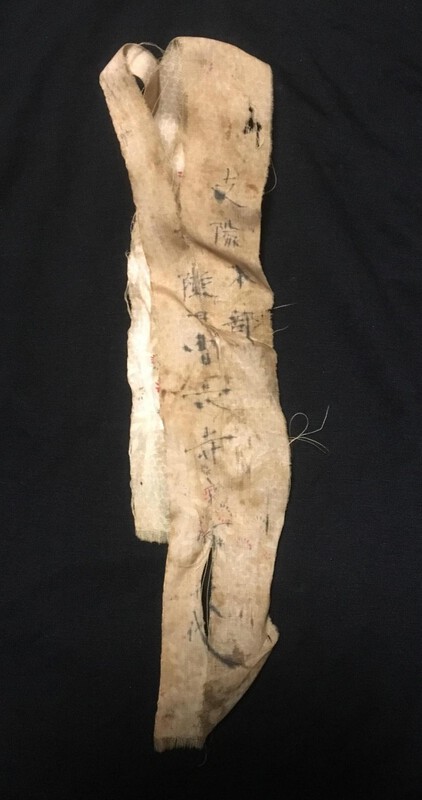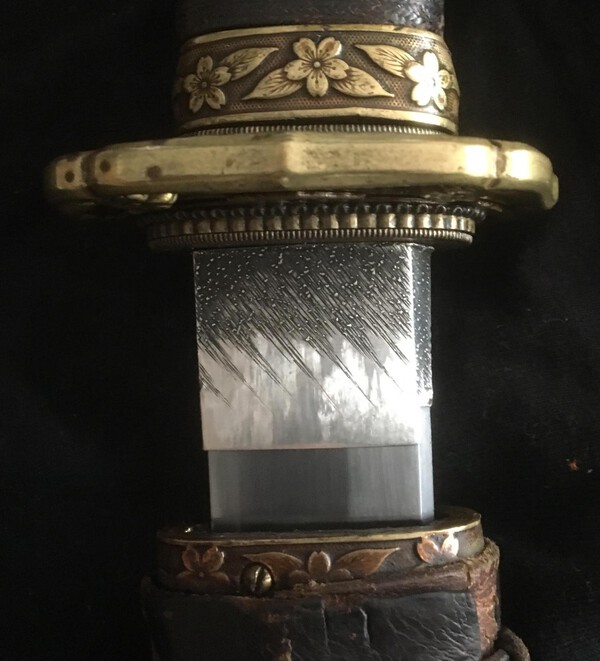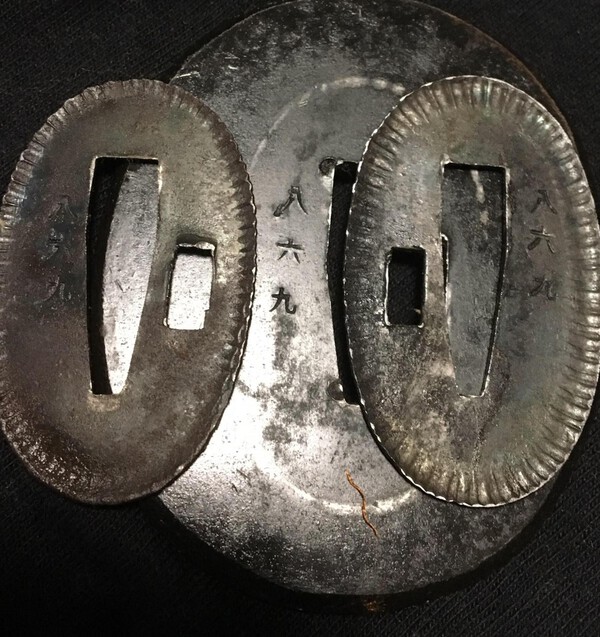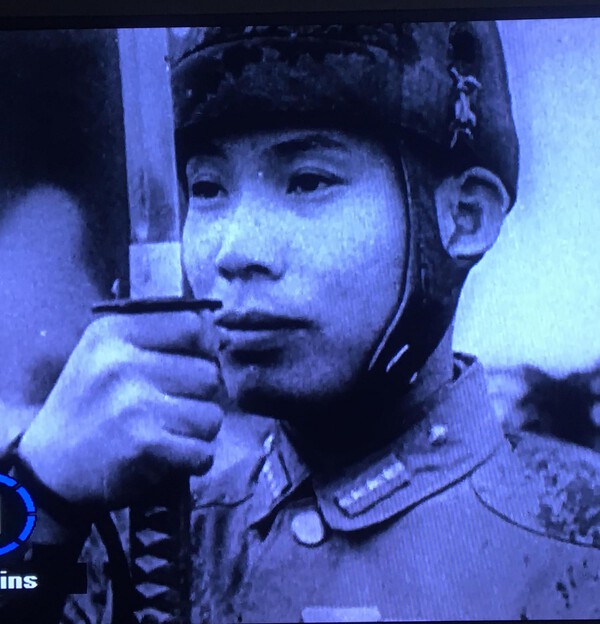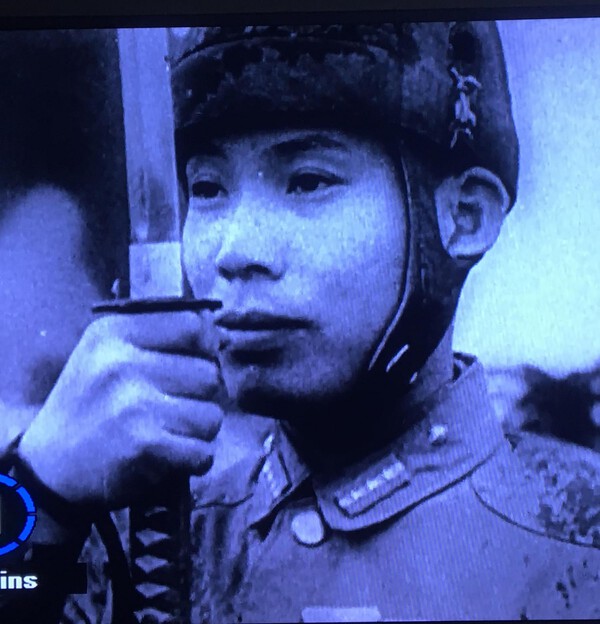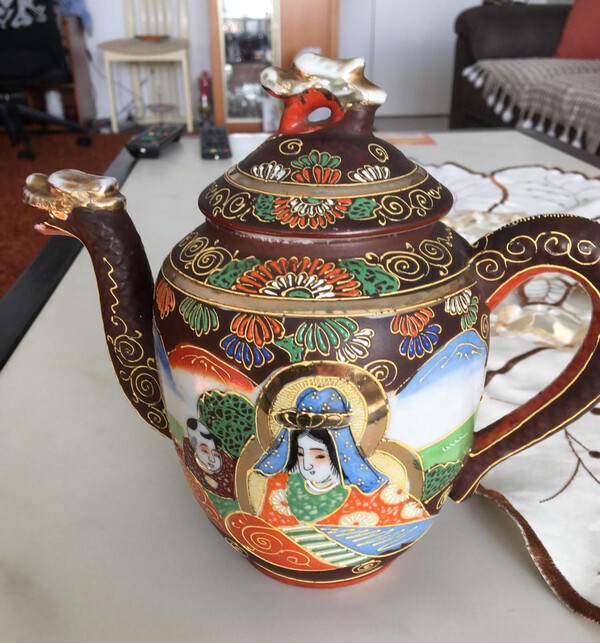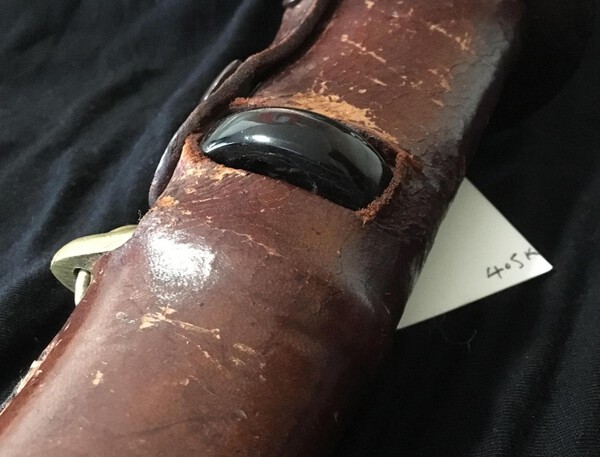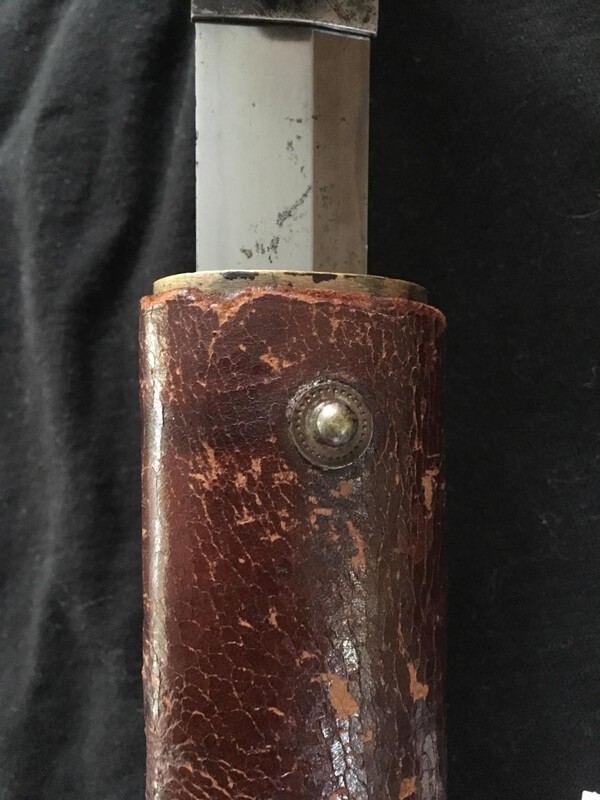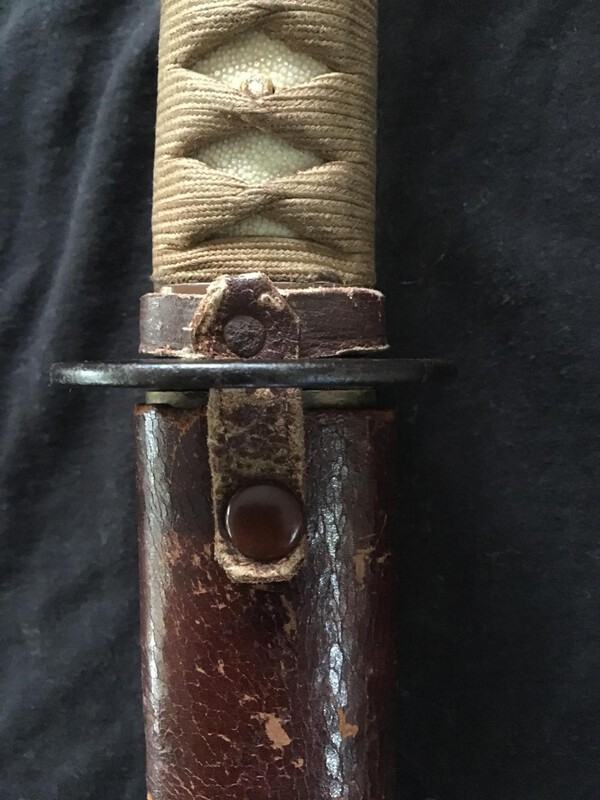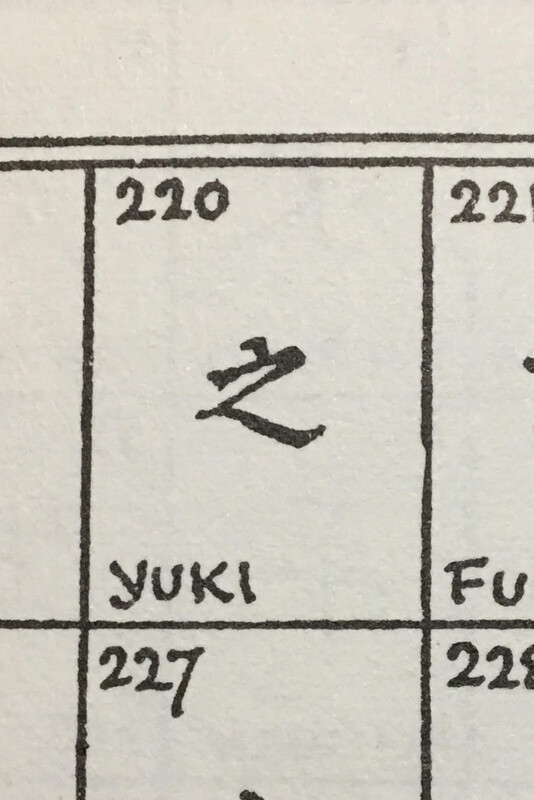-
Posts
1,902 -
Joined
-
Last visited
-
Days Won
85
Everything posted by IJASWORDS
-
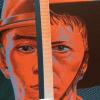
Help With Miyaguchi/ikkansai Kunimori Please
IJASWORDS replied to Navymate's topic in Military Swords of Japan
Bruce, mine has no date, so David's revelation about post 1940 production still leaves the question unanswered. I hope, as David asks, someone recently has submitted a Kunimori to the NBTHK. -

Help With Miyaguchi/ikkansai Kunimori Please
IJASWORDS replied to Navymate's topic in Military Swords of Japan
It's almost two years to the day since this topic was initiated. So I am wondering if there has been any new information on this much documented sword Smith. In particular, with relation to whether any have been papered. In light of the recent papering of Koa Isshin swords, I wonder. I still class Kunimori swords as Gendai-to, as they have the attributes, and NO stamps! No doubt when Kunimori made swords in the Yasukuni Shrine, they are regarded as nihonto. Any thoughts or information would be appreciated. -

I'm back with another cool sword, tell me about it, please
IJASWORDS replied to Karenfc's topic in Military Swords of Japan
Nice pattern 1 copper handle NCO sword. Very very collectible these days, even in rough, but complete condition. I would certainly be happy to find one these days. As Bruce says, not many made, and many didn't survive. -
At wars end, Japanese swords were surrendered with the promise that the sword would be returned to the owner at some time in the future. Of course this never happened, and many swords souvenired were taken with surrender tags attached. Tags took many forms, and it would be historically interesting to see what exists today. My contribution is a piece of silk cloth torn into a strip, written on and tied onto the hanger ring. Would be great to see other examples, and translations if possible.
-
-
Dave, knew you would come to the party! My rain pattern is indeed on a papered nihonto. And similar tool work to your middle example.
-
This is on a WW2 Smith, (Morita) Kaneshige, no date no stamps however. Maybe an up market optional extra. Interesting to find our more. Dave R usually has some ideas.
-
Hey Bruce, I call it rain pattern, and never noticed they DO fall in the same direction both sides. Some even look like they have hail stones! This one is silver foiled.
-
From all the articles I have read, most translated from Japanese, rail steel was not used to make swords. But the research was done in the railway facility. A rich iron ore of Manchurian origin, was converted at low temperature into an iron sponge. A Doctor Kazuhara Kusaka, studied Swedish steel and Tamahagane with the express purpose of making a sword steel in an electric furnace. A similar process to making malleable iron. This sponge was forged and folded to expel trapped gases, slag and impurities. It was formed into a long donut, a soft iron core inserted, then formed by hammer forging into a sword. Due to the fact that the outer sponge steel was forged, this sword exhibited a Masame Jihada. In fact, because of its appearance performance and hada, it was appraised as a Koto Hizen Tadayoshi. So this trial sword and it's method of production was the basis for subsequent swords, though mechanization would have certainly been used. The issue of the Hamon is interesting. In one article it states that an "electric furnace" was used to heat the sword prior to quenching. No mention of clay either. So it is possible that the sword edge was heated in an induction furnace, and quenched, hence a straight Hamon. That's how hacksaw blades are edge hardened, while retaining a flexible back.
-
When you get a new sword and hope it isn't monkeyed around with, finding matching assembly numbers on the blade and fittings, makes you feel good about it.
-
Steve, only going on what the documentary said. The subject was Japan's diminished number of properly trained pilots towards war end. So that they started to do minimal training for Kamikaze pilots.
-
-

mei translation, age guess and incomplete horimono?
IJASWORDS replied to waljamada's topic in Translation Assistance
Hi Adam, don't know if you are interested, but the tsuba to actually match your F/K set on your sword attached. To me they are really quite beautiful. -
Thanks Geraint, I didn't pay too much, but got it because of its beauty. I will use it now for everyday use.
-
Today I picked up from a deceased estate some possible antiques. Went there as it said Japanese stuff, so thought there may be sword stuff. No swords, but got a full tea set of Satsuma Ware. Tea pot, six cups and saucers etc. When you hold a cup to the light, the image of a Geisha appear. Is it old, is the set worth anything?
-
Fantastic!!
-
Love your work Bruce.
-
Trystan, a strong possibility.
-
http://www.militaria.co.za/nmb/topic/2599-mei-help/ This was also discussed in 2008, that is where Shigeyuki came from.
-
Steve M, certainly is a cul-de-sac, but would great to reach some common consensus on translation. I am only working off what others, wiser than I, have quoted.
-
David, I am going by a translation done on this sword in here in 2008. The "yuki" part is correct, image attached. If you have a different translation opinion, please help.




